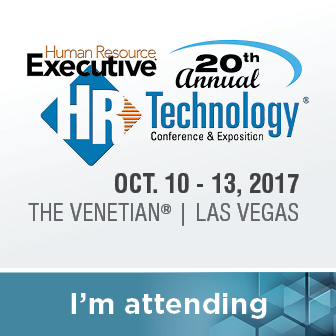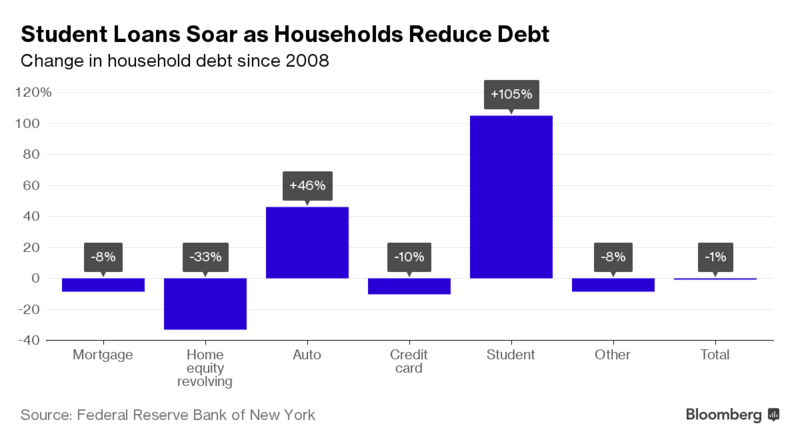HRE Column: HCM Trends and How HR Can Take Advantage of Them
Once again, I offer my semi-frequent reminder and pointer for blog readers that I also write a monthly column at Human Resource Executive Online called Inside HR Tech that can be found here.
This month, I take a look at the recently released Deloitte 2017 Global Human Capital Trends Report, which was also the subject of a recent HR Happy Hour Podcast we did with Josh Bersin. This annual report, now in its 5th year, has emerged as one of the HR and HR Technology industry's 'must-reads', so for the benefit of HR Executive readers that may not (yet) have listened to the podcast, I tried to capture the content and the spirit of the conversation I had with Josh in the HRE column.
So in this month's HR Executive column I examine a a few of the themes or trends that were identified in the Global Human Capital trends Report, and how these trends will help inform and shape the design, development, and deployment of HR and workplace technologies in 2017, and beyond. This was a fun podcast with Josh, and a fun exercise for me, and I hope you get some ideas and insights from this review as you plan out your year and make your workforce, workplace and HR technology decisions in 2017.
From the HRE piece:
Recently, Deloitte released its annual Global Human Capital Trends Report, which, in just its fifth year of publication, has become essential annual reading for HR, business and HR-technology leaders. The report combines findings from a comprehensive survey of more than 11,000 respondents, interviews with multiple HR and business leaders, case studies from many leading organizations, and insights from Deloitte's human capital management analysts and consultants. The result is an insightful report that sheds light on trends, challenges, and opportunities for HR and business leaders who are all tasked with driving business results through their people.
I had one of the report's principal authors, Josh Bersin of Bersin by Deloitte, as a guest on my HR Happy Hour Podcast on the day the report launched to discuss some of the key findings. For the benefit of readers who have not (yet) had a chance to listen to that interview, I thought I would share some of it here.
Rethinking the Organization
Building the "organization of the future" was cited by 88 percent of Deloitte's survey respondents as being an important or very important challenge. What is driving this imperative for many HR and business leaders? Primarily, its the need for the organization to become more agile, to be able to adapt more quickly to changing market and competitive conditions, and to increasingly embrace new and more flexible forms and sources of talent. The catalyst for at least some of this need is the increased volume and importance of more flexible labor/talent arrangements, i.e. contractors, consultants and other gig workers. As these sources of flexible and contingent labor have continued to evolve, HR-technology solutions such as Upwork, Wonolo and Toptal have become increasingly important sources of talent that HR and business leaders are relying upon to execute their rapidly changing workforce needs.
But it is not just the increased reliance on contingents that's driving the need to rethink the organization. The way work gets done in organizations today -- increasingly, via short-term, purpose-built and cross-functional teams, and not in formal, functionally defined hierarchies -- is also forcing HR leaders to reconsider how the organization should be designed. The need for increased agility in the assembling and disassembling of these teams requires HR and talent leaders to have better insights into individuals skills, as well as any overall organizational skill deficiencies. The need for robust talent-management, workforce-management, learning and development, and organizational collaboration technologies to support these rapid shifts in organizational dynamics places primary importance on a close connection between business, people and IT strategy in order to ensure that the organization can react as the market demands.
The Employee Experience
On the podcast, Bersin told me "the employee-engagement market is over." On first blush, you might think that was an odd thing to say, given that employee-engagement levels remain persistently low, and most HR and business leaders have bought into the notion that increasing these engagement scores would be a good thing for retention, morale and productivity.
Read the rest at HR Executive online...
If you liked the piece you can sign up over at HRE to get the Inside HR Tech Column emailed to you each month. There is no cost to subscribe, in fact, I may even come over and re-seen you lawn, take the car for a wash, or help you plant your spring flowers. I especially like alstroemelias.
Have a great day!

 Steve
Steve



